Ancient Greece Midterm Review (AR104)
1/62
Earn XP
Name | Mastery | Learn | Test | Matching | Spaced |
|---|
No study sessions yet.
63 Terms
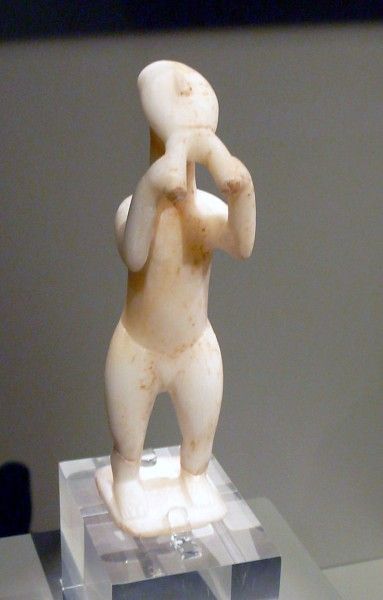
statuette of man playing double flute/aulos
Location: Cyclades islands
Culture: Cycladic
Period: Early Bronze Age
Material: Marble
Overall identification: statuette of man playing double flute/aulos
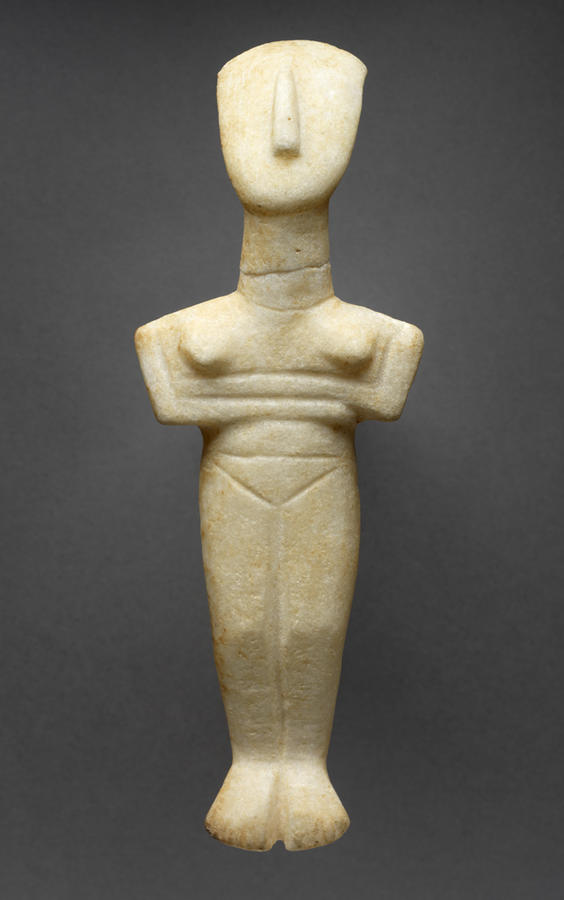
female figure/statuette
Location: Cyclades islands
Culture: Cycladic
Period: Early Bronze Age
Material: Marble
Overall identification: female figure/statuette
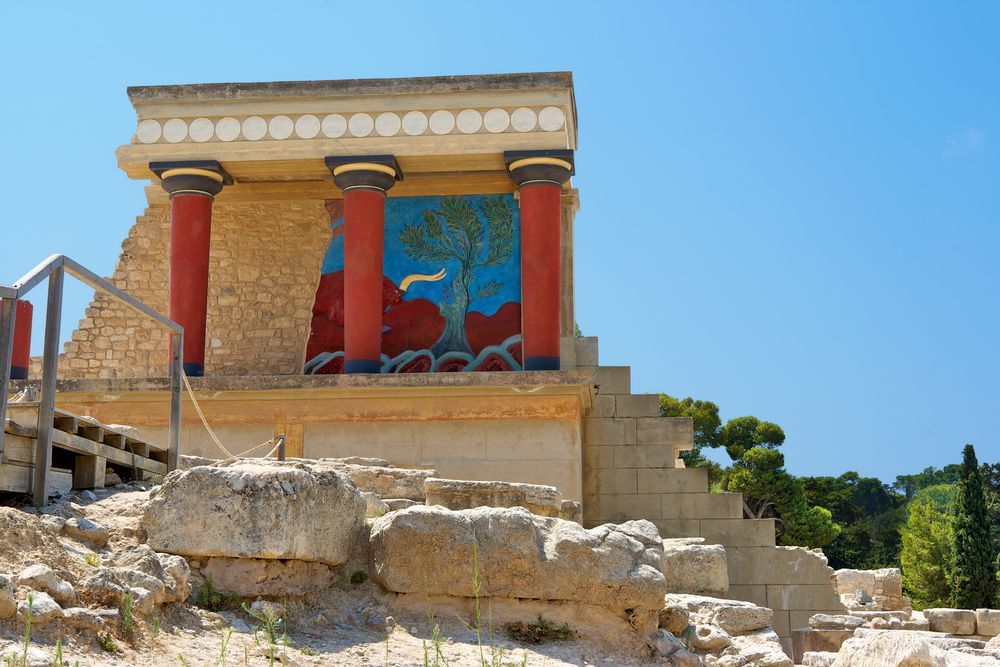
Palace at Knossos
Location: Island of Crete
Culture: Minoan
Period: Bronze Age
Restored by Sir Arthur Evans; There was controversy over his over-idealization of the Minoan culture, portraying them as nature lovers who worshipped a mother goddess when that is just speculation.
Overall identification: Palace at Knossos
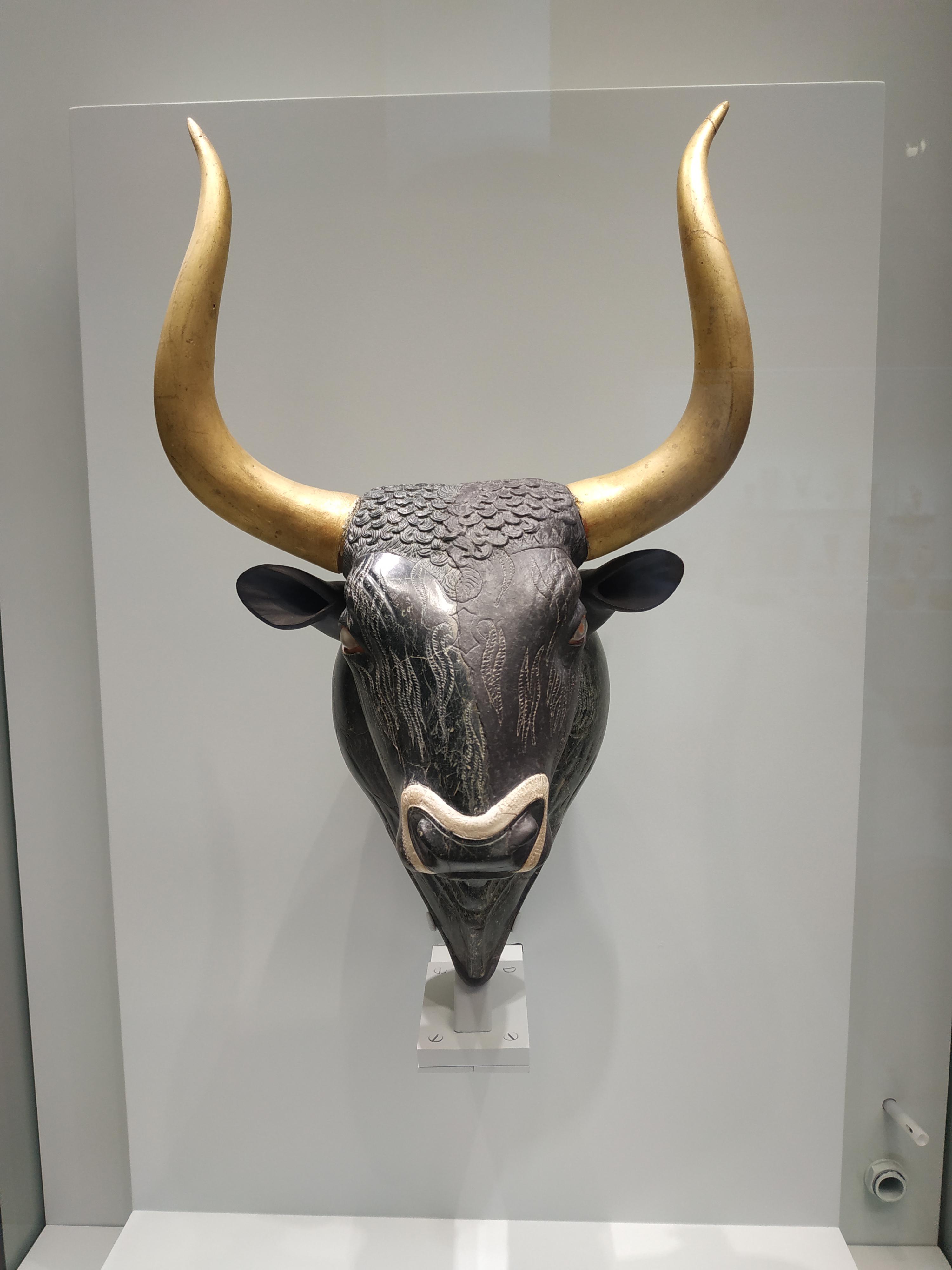
rhyton of a bull
Location: Palace at Knossos, the island of Crete)
Culture: Minoan
Period: Late Bronze Age
Purpose: ceremonial drinking vessel
Material: composite
Overall identification: rhyton of a bull

Minoan goddess with snakes
Location: Palace at Knossos, island of Crete
Culture: Minoan
Period: Late Bronze Age
Purpose: used in worship/ritual
Material: Faience
Overall identification: Minoan goddess with snakes
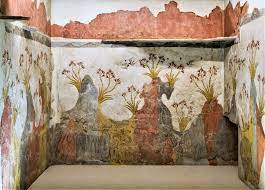
“Spring” fresco
Location: palace at Akrotiri, island of Thera/Santorini
Culture: Minoan
Period: Late Bronze Age
Type of Work: fresco
Fate of Thera/Santorini: volcanic eruption
Overall identification: “Spring” fresco
No connection with the fictional Atlantis!
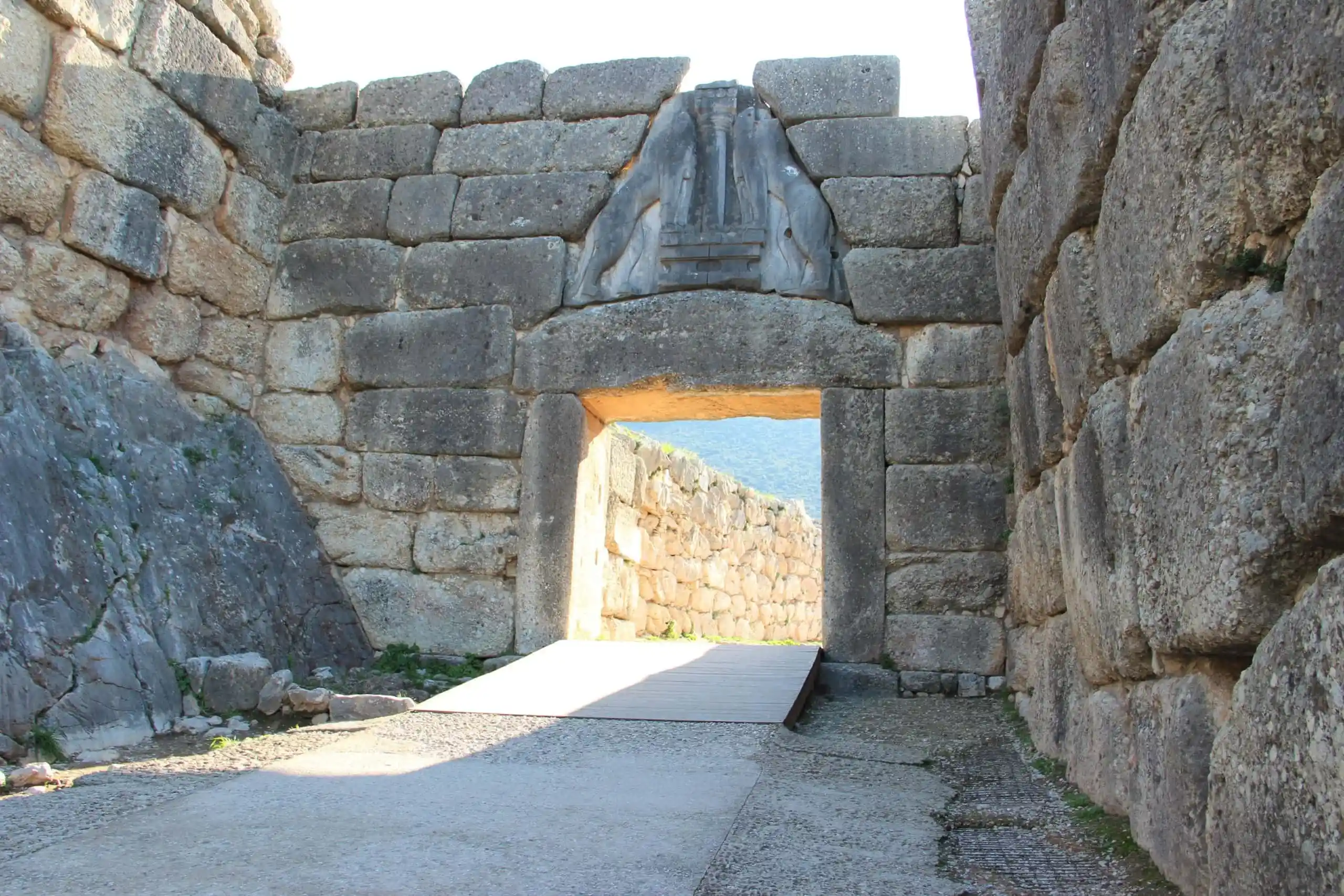
Mycenae Lions Gate
Location: Mycenae
Period: Late Bronze Age
Archeologist: Heinrich Schliemann
Overall Identification: Mycenae Lions Gate
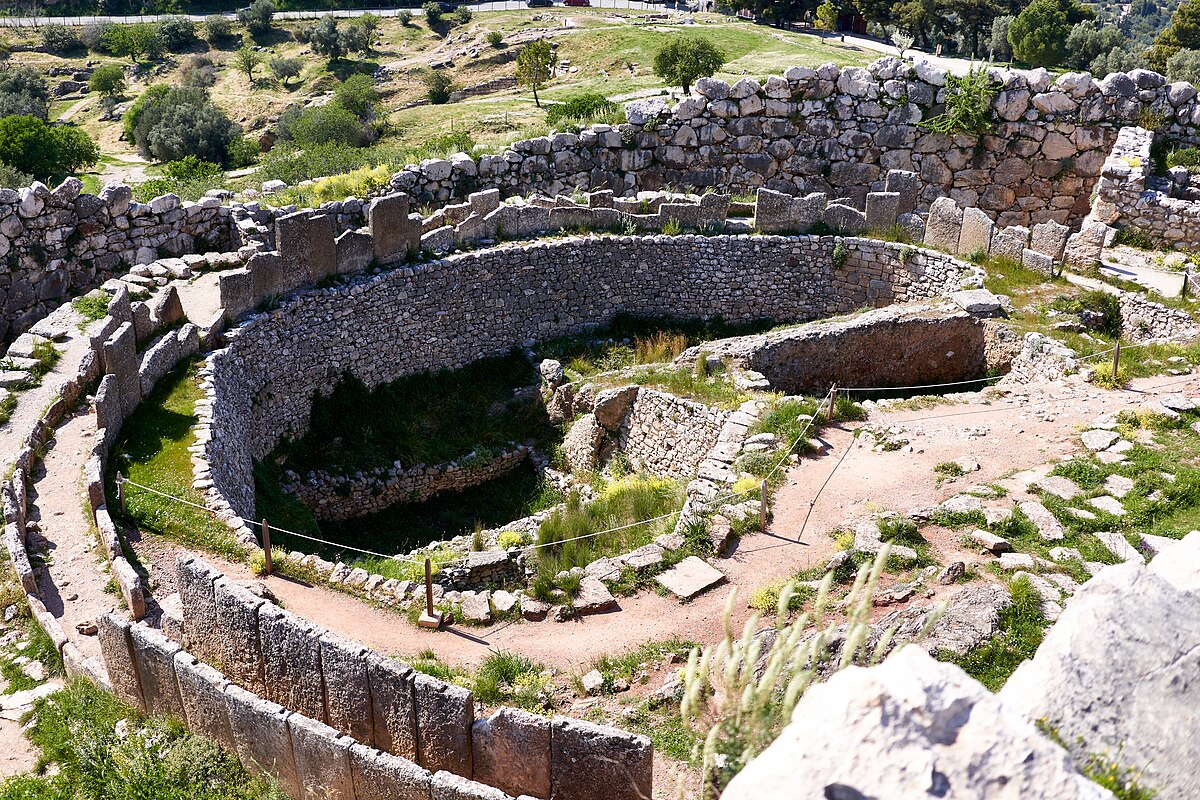
Grave Circle A
Location: Mycenae
Period: Late Bronze Age
Specific Name: Grave Circle A
Type of Grave: Shaft grave
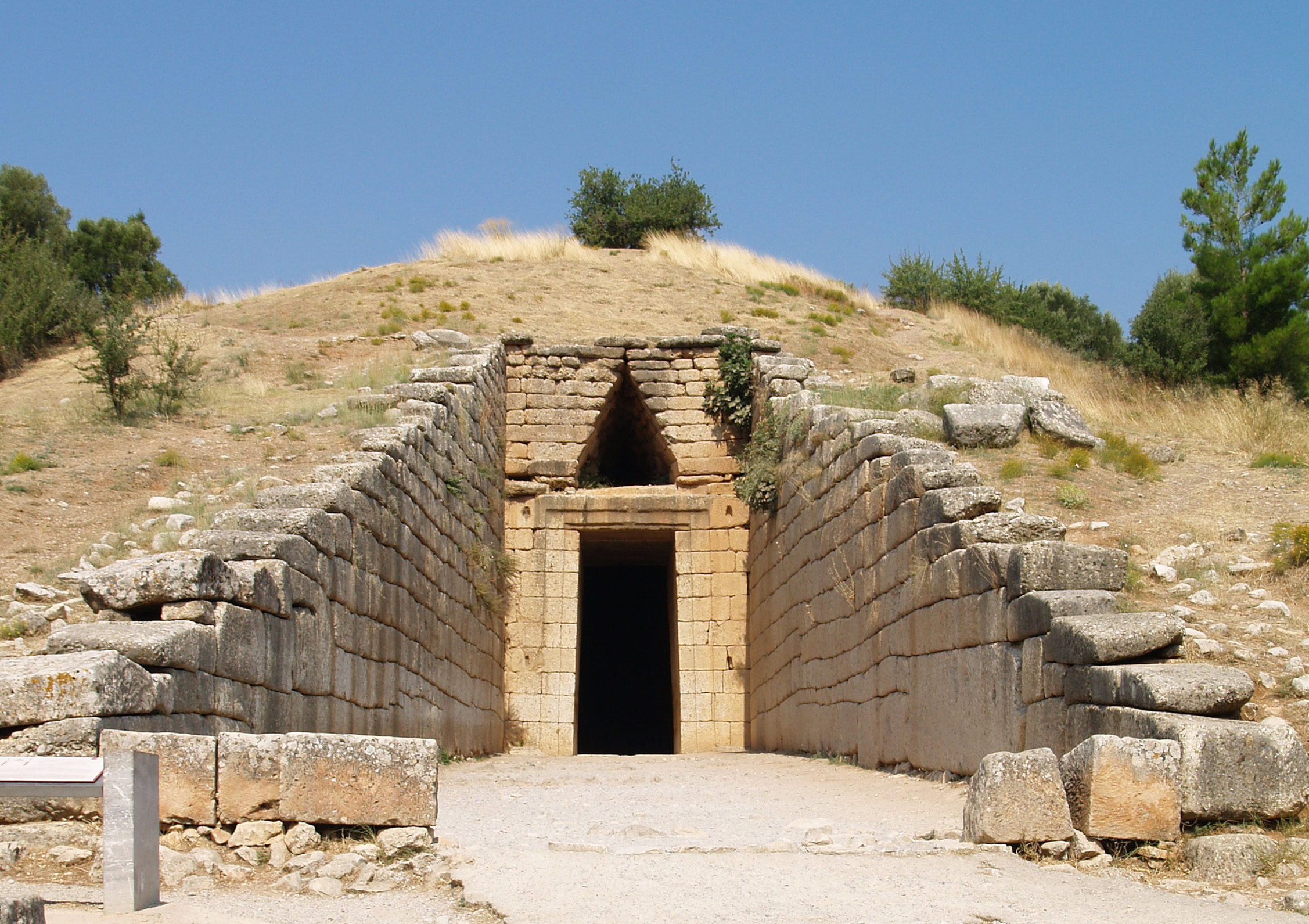
“Treasury of Atreus”
Location: Mycenae
Period: Late Bronze Age
Specific Name: “Treasury of Atreus” - incorrect name
Type of Grave: Tholos Tomb, Beehive Tomb
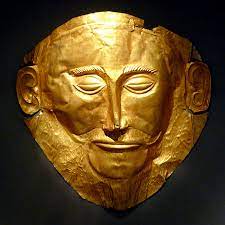
“Mask of Agamemnon”
Period: Bronze Age
Society: Mycenaean
Identification: Heinrich Schliemann gave it the WRONG NAME of “Mask of Agamemnon”. It’s not him.
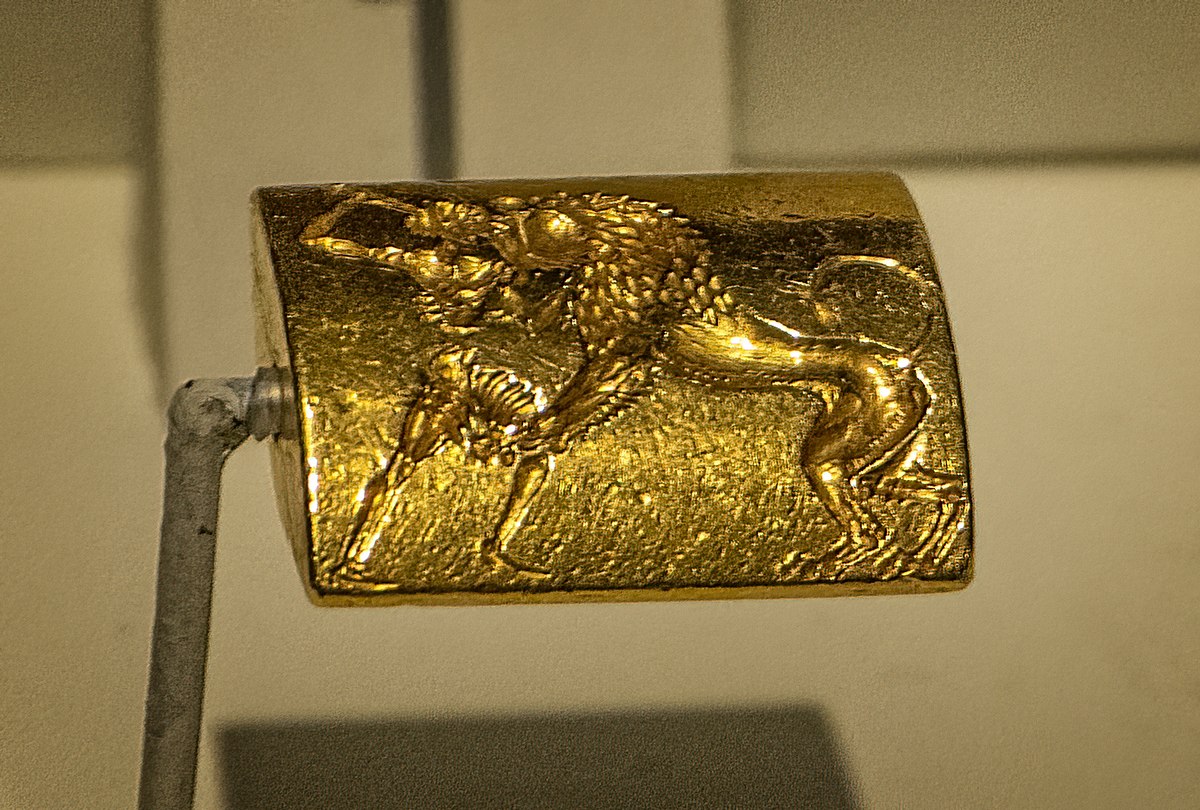
Grave Circle A Bead
Where was this ring found?: Bead found in Grave Circle A, Grave III, Mycenae
What period is it from?: Second half of the 16th century BCE
What is Grave Circle A?:
Why did Heinrich Schliemann believe the finds from Mycenae were connected with Homeric heroes: They found destruction that may have been from the Trojan War and discovered the culture of Early Bronze Age Troy (but is disputed, doesn’t match).
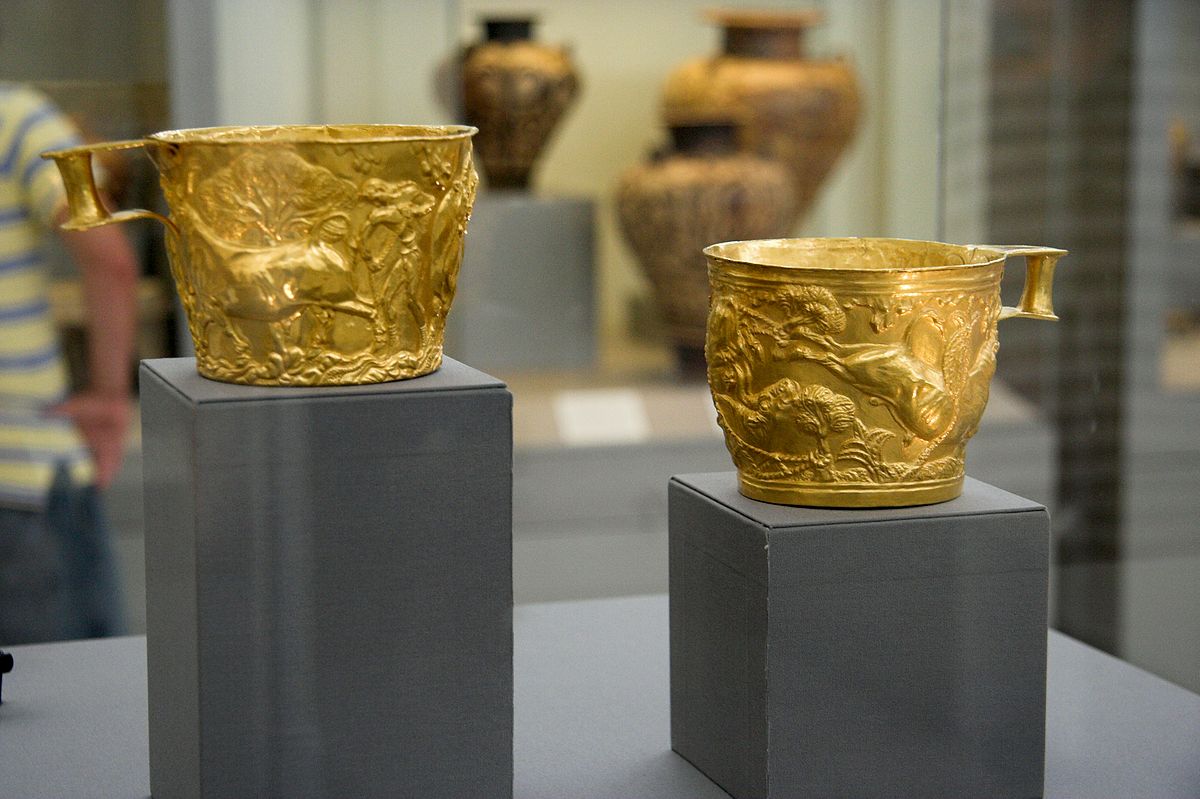
Vaphio (or Vapheio) Cups
Period: Late Bronze Age
Found At: Vaphio, near Sparta/Laconia on the Greek mainland
Possible Cultures: Minoan, Mycenaean
Overall Identification: Vaphio (or Vapheio) Cups
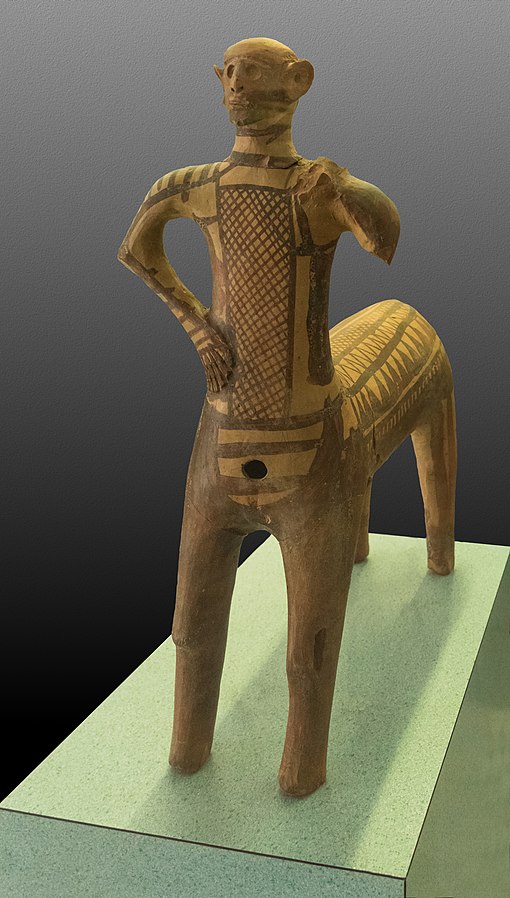
Centaur Chiron of Lefkandi
Cultural Period: Early Iron Age
Artistic period: Geometric period
Type of entity represented: centaur
Material: clay

Dipylon “Hirschfeld” Krater
Artistic period: Geometric period
Repository: Metropolitan Museum of Art, New York
Likely connection to the Iliad
Hirschfeld is the scholar who worked on the piece, not the potter
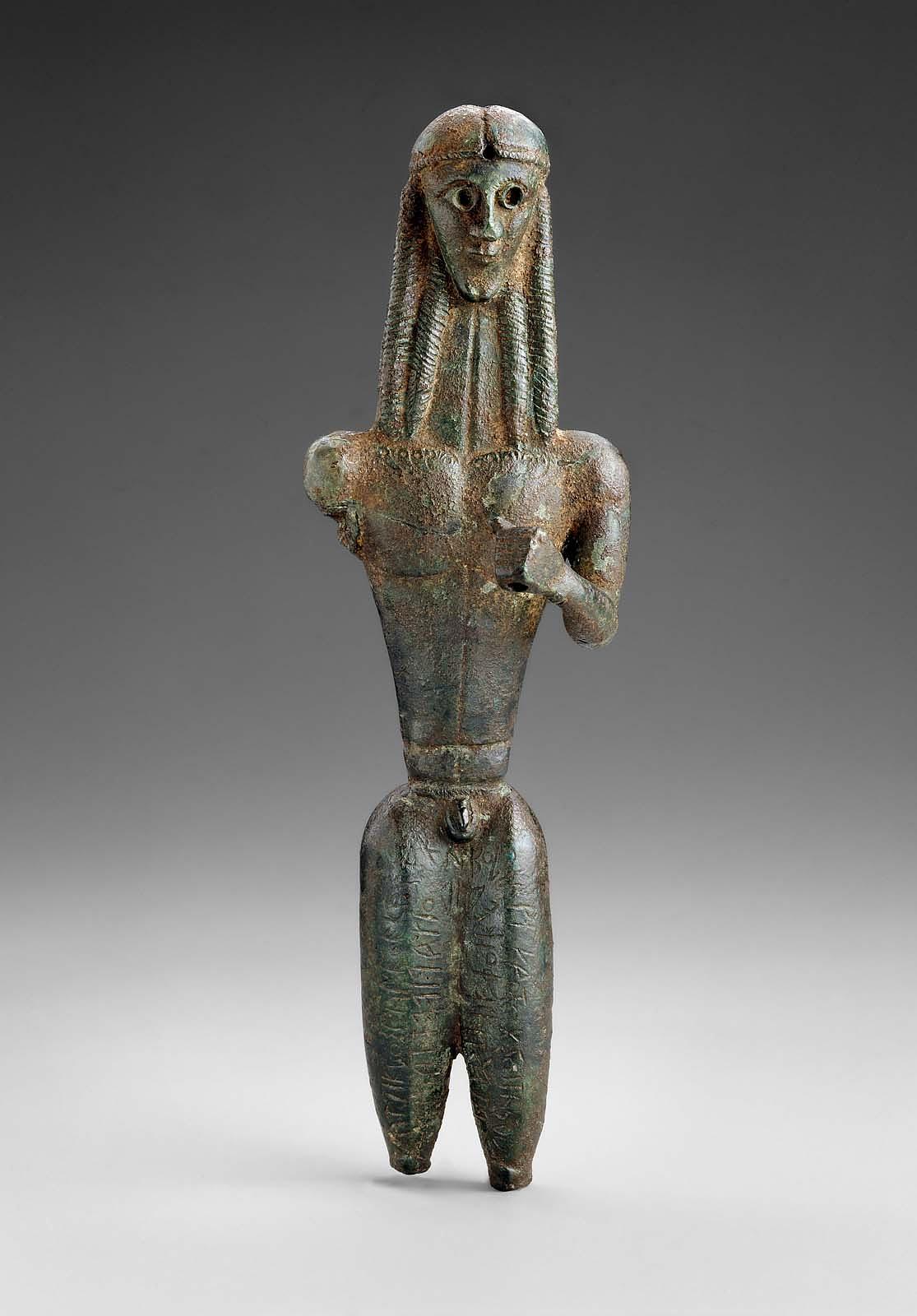
Mantiklos ”Apollo.”
Artistic period: Late Geometric or Early Orientalizing
Material: Bronze
Identification: ritual object/god
Where found: Greek mainland
Repository: Museum of Fine Arts, Boston
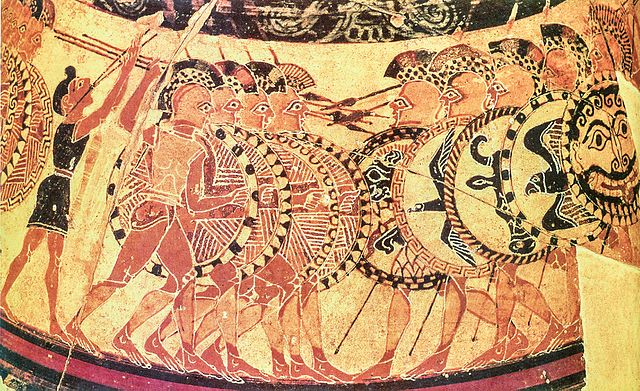
Chigi vase. Olpe.
Style/Period: Archaic
Hoplites played into battle
Testable for hoplites
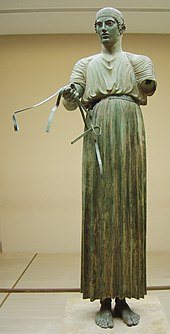
Charioteer of Delphi (Pythian Games)
Testable for chiton, equestrian events’ the
stephanic/Pythian games
Found at Delphi
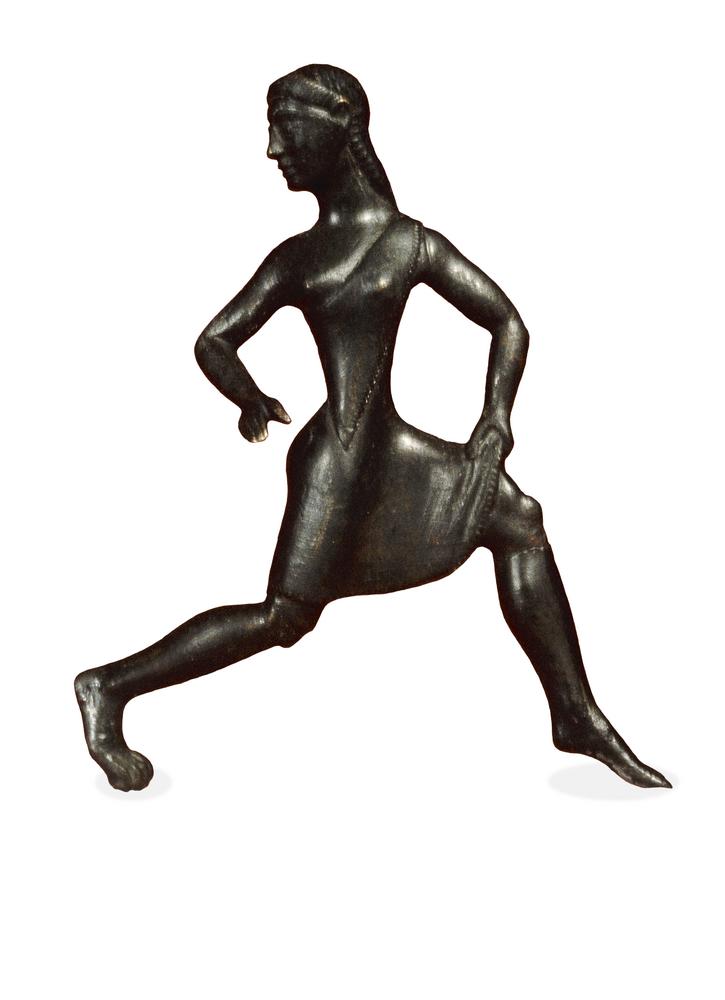
Bronze statuette of girl runner
Material: Bronze
When Made: c. 520-500 BCE
Where Made: most likely made in Sparta or environs
Significance of object: example of Greek girl/young woman participating in sports
Repository: British Museum
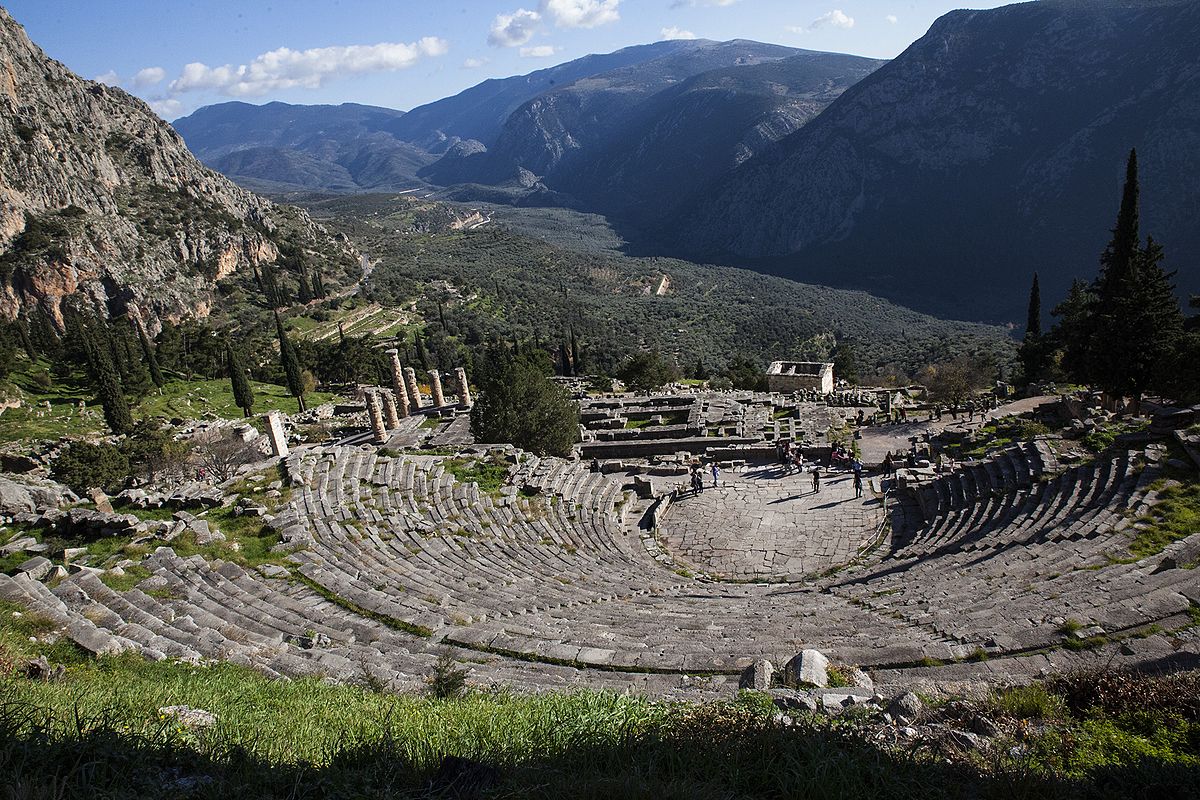
Delphi from edge of race track
Location: Delphi
Name of games: Pythian
Testable on the facilities shown on or off picture including:
where the photographer was positioned: view from top of theatre/edge of racetrack
race track
concept of stephanic games in context of a religious and community festival
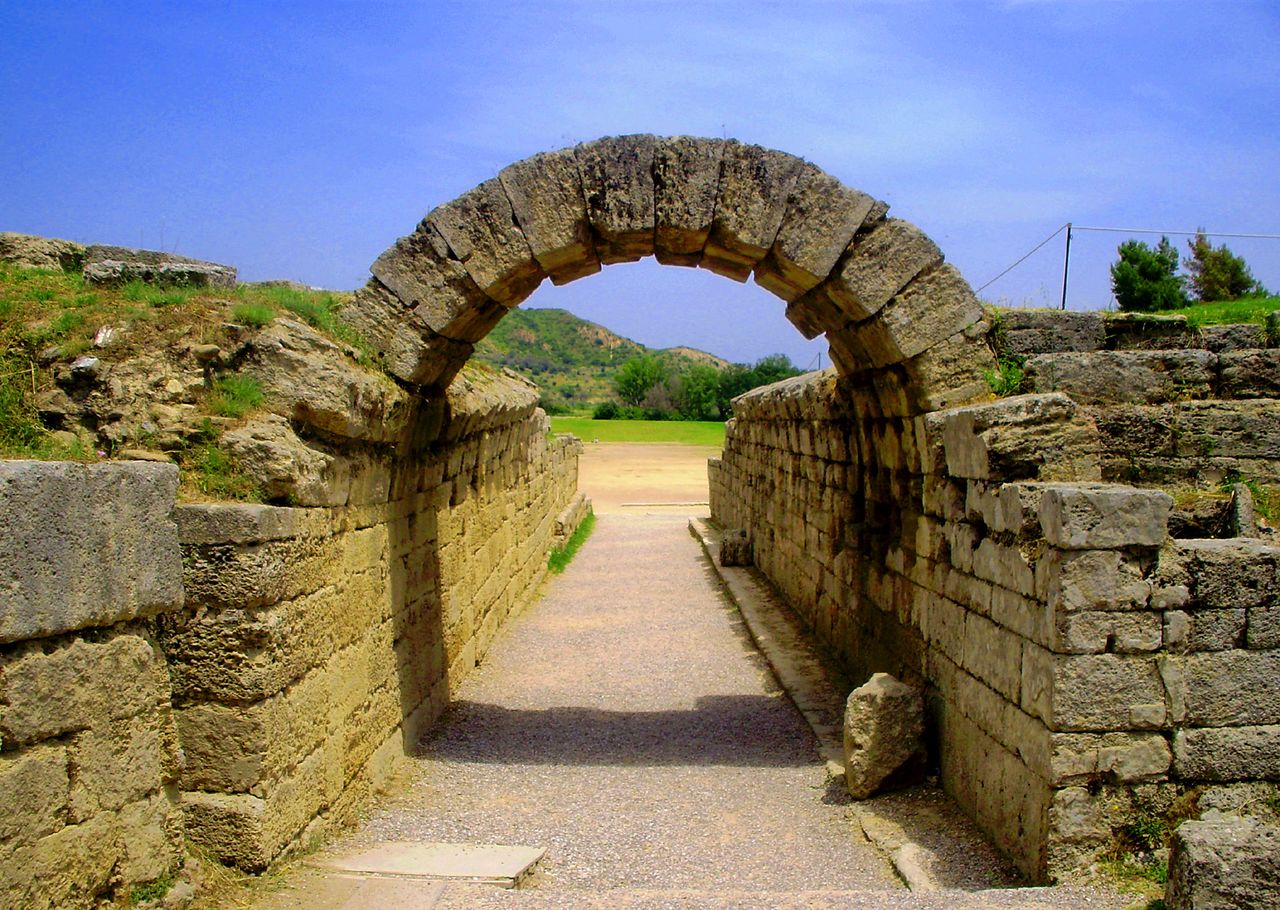
Olympia Stadium Entrance
Location: Olympia
Type and purpose of building: Stadium entrance, building for athletics and training
Term “stephanic games”:
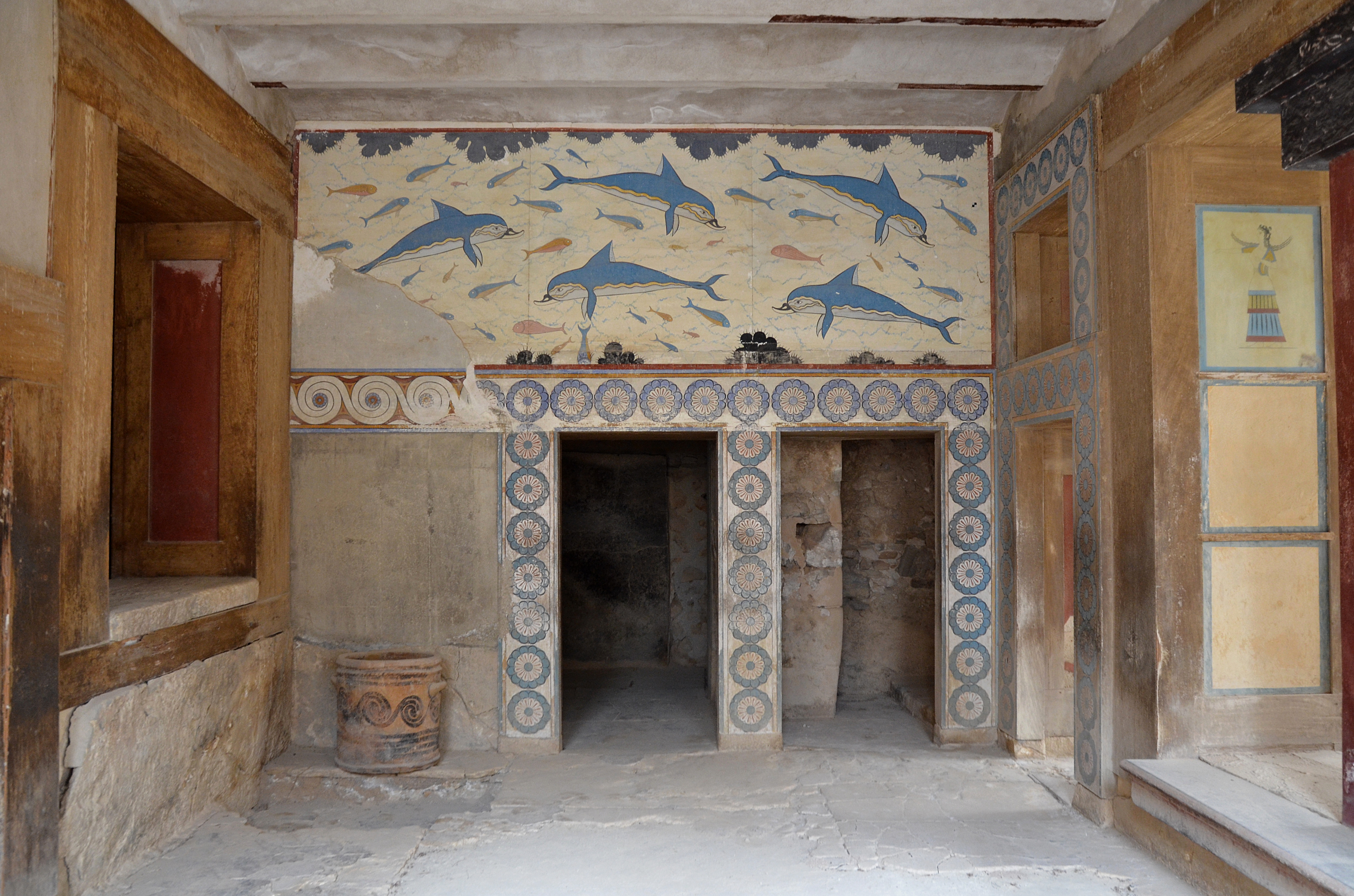
The “Queen’s Megaron”
Location: Palace at Knossos, island of Crete
Culture: Minoan
Type of Work: Fresco
INCORPORATED INTO A TEXT QUESTION
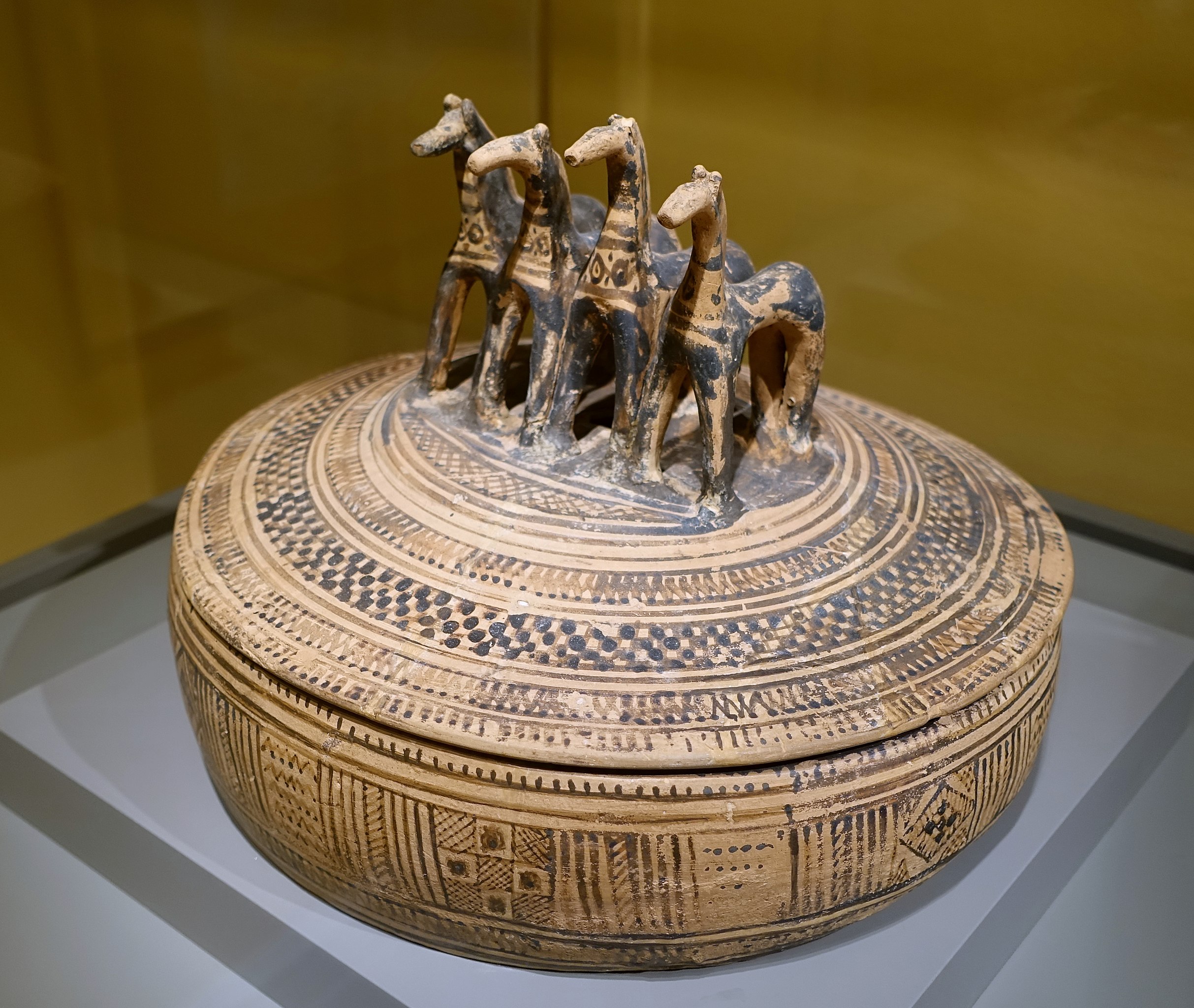
Pyxis (round storage box)
Period: Geometric
Species of animals on handle; horses
Repository: British Museum
INCORPORATED INTO A TEXT QUESTION
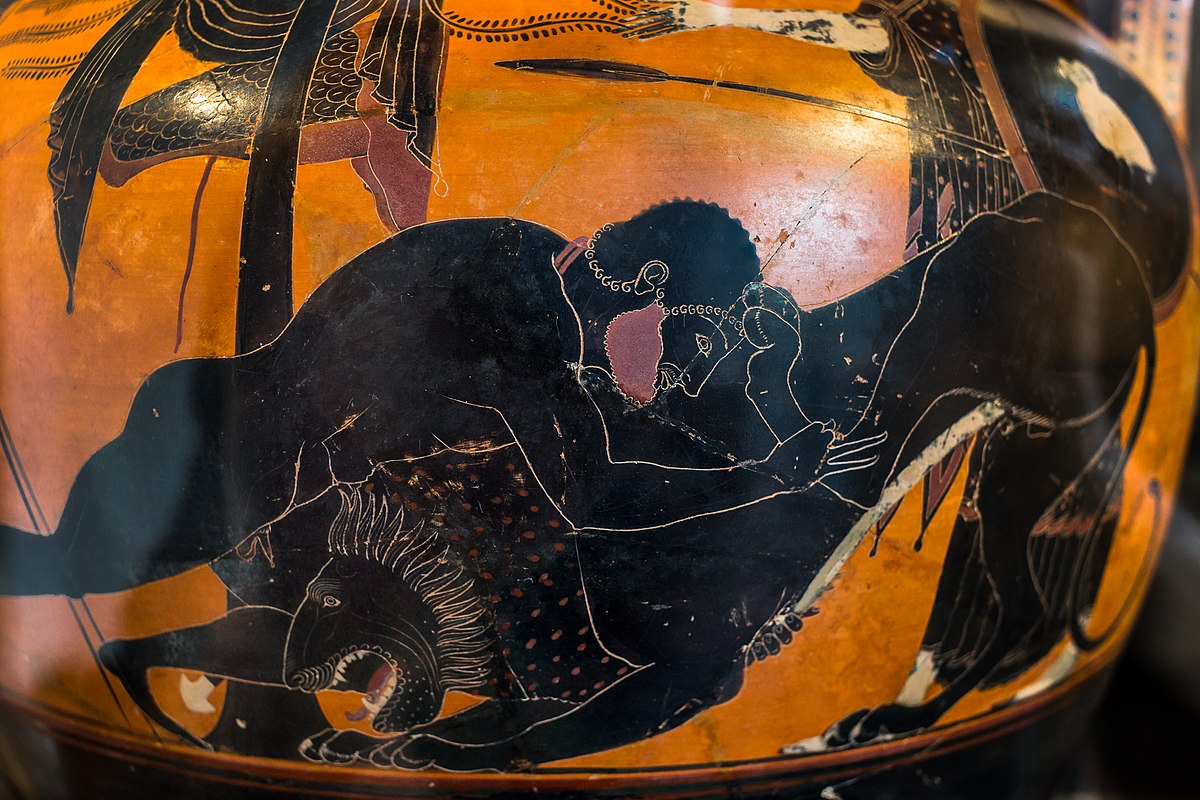
Heracles and Nemean Lion: black figure amphora.
Names: “Heracles” and “Nemean Lion,”
Kato pale wrestling,
black figure vase painting
INCORPORATED INTO A TEXT QUESTION
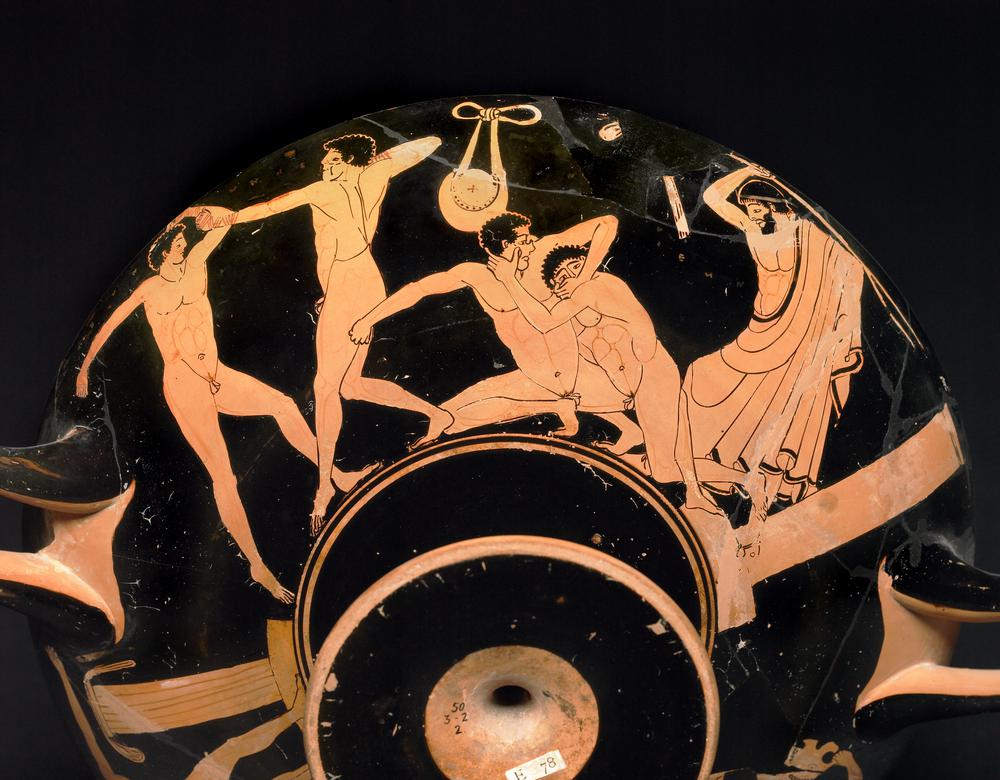
Red-figured Kylix showing pankratiasts commiting fouls
Event: Pankration
People: Pancratists
Repository: British Museum
basic rules of pankration
why the referee is about to strike one of
the competitors
INCORPORATED INTO A TEXT QUESTION
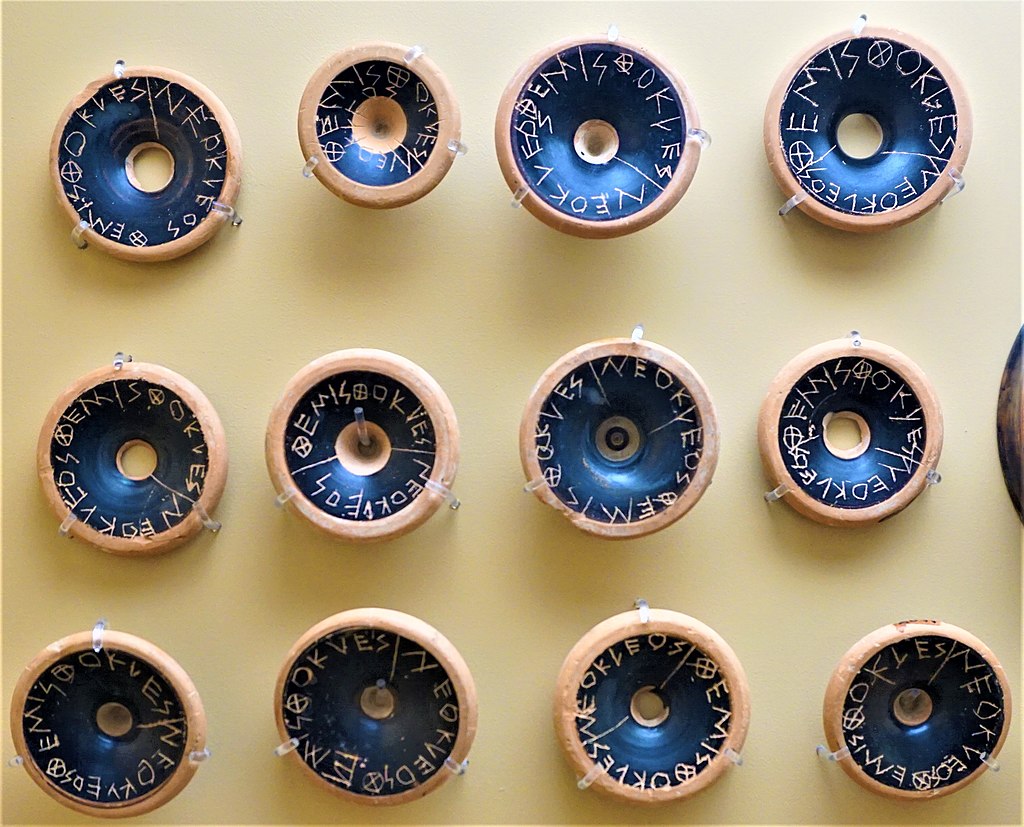
Ostraca/ostraka
Technical term for this type of object:
sg.ostracon/ostrakon,
pl.ostraca/ostraka)
Purpose of use; used for an ostracism
Name of person on object: Themistocles (Athenian archon and straegos)
INCORPORATED INTO A TEXT QUESTION

Hoplite
masses of heavily armoured and tightly packed infantry. Stood in lines, and had to work together to maintain the strategy.
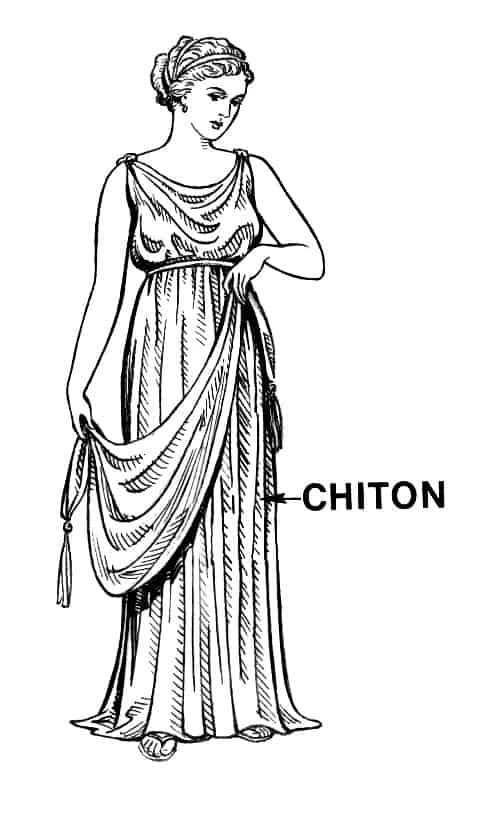
Chiton
two woollen rectangles of fabric pinned/sewn at the shoulder - worn by men and women
Equestrian Events
Equestrian events (horseback riding, chariot racing) were indicators of social class. Those who could find horses were usually very wealthy.
Panhellenic (Stephanic) Games
Also known as stephanic (crown) games because the only prize is a crown of perishable material
The games were held according to a 5-year cycle (periodos), the final of which was at the Olympiad. Equivalent to a 4-year cycle in modern times.
Year 1: the Olympic Games
Year 2: the Isthmian
Year 2: Nemean Games
Year 3: the Pythian Games
Year 4: the Isthmian and Nemean Games
Periodonikes: an athlete who won prizes at all four of the stephanic games. Didn't have to win all games in a single year.
Participants were free males who spoke Greek.
If you didn't win, you should be ashamed and wouldn't want to be seen by loved ones (Ancient Greek shame culture)
Married women likely weren't allowed to enter the Olympic stadium during the games
Stadiums
where Greek sporting events were held.
We get the modern word “stadium” from Ancient Greece.
Stephanic Games
(religious & community festival context)
Stephanic games also were played to worship particular gods and prove themselves to the deities.
The Panathenaic Festival took place annually.
Panathenaic competition:
Only held during the third year of the cycle
Held in Athens
Was not one the big games, but had lucrative prizes of olive oil
The Greater Panathenaic Festival:
Athens bought prestige for their own festival, using lucrative prizes to be better known. Allowed the city to come together.
Delphi Race Track
Use for running competitions in Ancient Greece
Kato Pale Wrestling
kato pale - ground wrestling
orthia pale - upright wrestling
featured as 1 of 5 events at the Greek pentatholon
Basic Rules of Pankration
Pankration/Pancratium (a dangerous mix between wrestling and boxing). It was brutal and there were no weight classes, so smaller man could face larger men.
Almost everything was allowed (choke-holds, slams, punching, strangling, kicking, etc.), except for gouging out eyes and biting.
Only ended if one opponent was knocked unconscious, admitted defeat, or even died (which happened).
Black Figure Vase Painting
Figural and ornamental motifs were applied with a slip that turned black during firing, while the background was left the color of the clay
Referees Striking Competitors
a punishment for cheating during athletic events
Ostracism
Temporary banishment from your city-state, decided by a vote in the Assembly
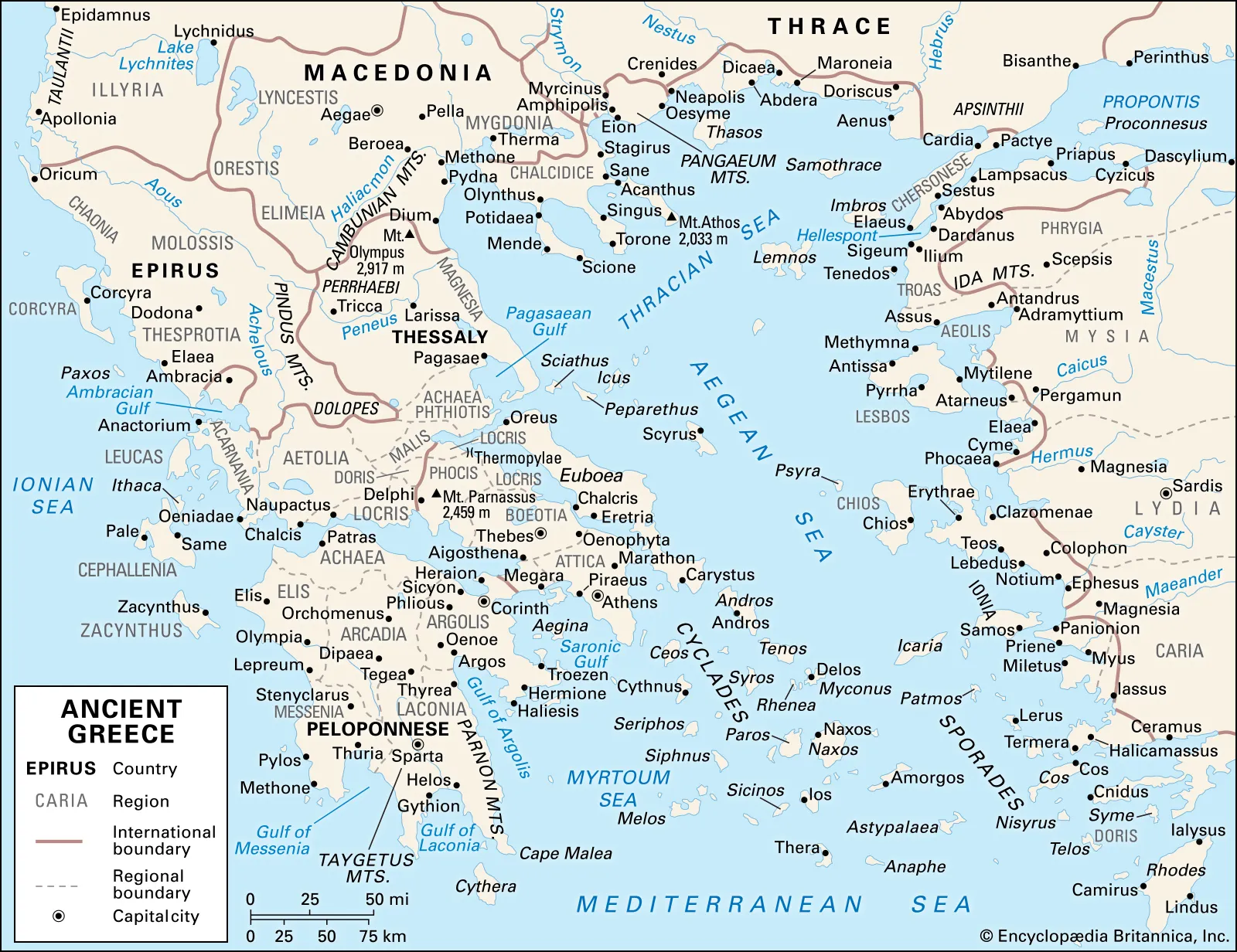
Map of Ancient Greece
FIND:
Athens (Athens and environs: Attica)
Macedonia
Boeotia
Thebes
Delphi
Corinth
Mycenae
Tiryns
Sparta
Pylos
Olympia
Miletus
Crete
Delos
Byzantium
Troy
Aegean Sea
Ionian Sea
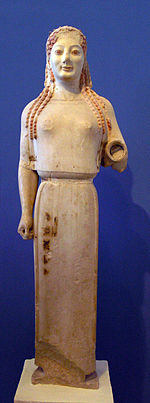
Peplos Kore
The “Peplos Kore” is a statue of a girl (Kore) from Athens, and now located in the Acropolis Museum. It is dated from ca. 530 BCE.
• She is wearing a light chiton underneath underneath her peplos.
Himitation
a heavier rectangle of fabric that goes over the chiton to keep the wearer warm in the cold. Worn by all genders.
Beards/Shaving
Beards were very popular in ancient Greece until the time of Alexander the Great (ca. 330), in part because of safety issues in beard and mustache trimming. The safety razor is a modern invention.
Petasos
Greeks, especially men, often wore this broad-brimmed hat when walking or working outdoors.
How can the climate of Athens be compared with that of south-central Ontario in summer and winter temperatures, and in average precipitation?
Greece has a Mediterranean climate with hot, dry summers. Snow is infrequent in Athens, but happens in the mountains. They are currently experiencing wildfires. Less rain than we get in southwestern Ontario.
What is a metic?
free men who were not Athenian citizens. Metics who lived in Athens were referred to by their city and not their demes, and even if they lived there for years, were not considered Athenian citizens.
How were Athenian citizen males named?
Patronymic: (a form of the father’s name in the genitive grammatical form [Athens] or adjectival form [Homer and elsewhere in Greece]).
Ex: "son of (a certain man)" or "daughter of (a certain man)."
ALSO: was custom to name the firstborn son after his paternal grandfather, with names of other children pulled from elsewhere in the family (but less likely to be from the father).
Heinrich Schliemann
The archeologist who excavated the site of Hisalik and Mycenae. His discoveries showed some truth to the “Age of Heroes” in the Homeric epics.
Sir Arthur Evans
He was the archeologist who discovered the palace of Knossos on the island of Crete. There was controversy over his over-idealization of the Minoan culture, portraying them as nature lovers who worshipped a mother goddess when that is just speculation.
Carl Blegen
In 1939, he discovered the Bronze Age palace of Nestor at Pylos. This was one of the oldest kingdoms in Europe and was at the center of the Mycenean Kingdom.
Bronze Age
Approximately 3,000-1,000 BCE.
The earliest archeological finds from Franchthi cave in Thessaly, occupied c.2,000
The Bronze Age is called that because of the development in technology that allowed them to smelt bronze. This bronze could be used for military and agricultural.

Iron Age
Lasted from 1100-800 BCE.
Also known as the “Greek Dark Age”, occurs after the Bronze Age. People began to use iron in place of copper and bronze, forging new technological advancements.

Lerna/House of Tiles
The culture of Lerna is best known early Bronze Age site, the House of Tiles.
Who destroyed the house of tiles? It was probably conquered by Greek speakers around 2000 BCE.
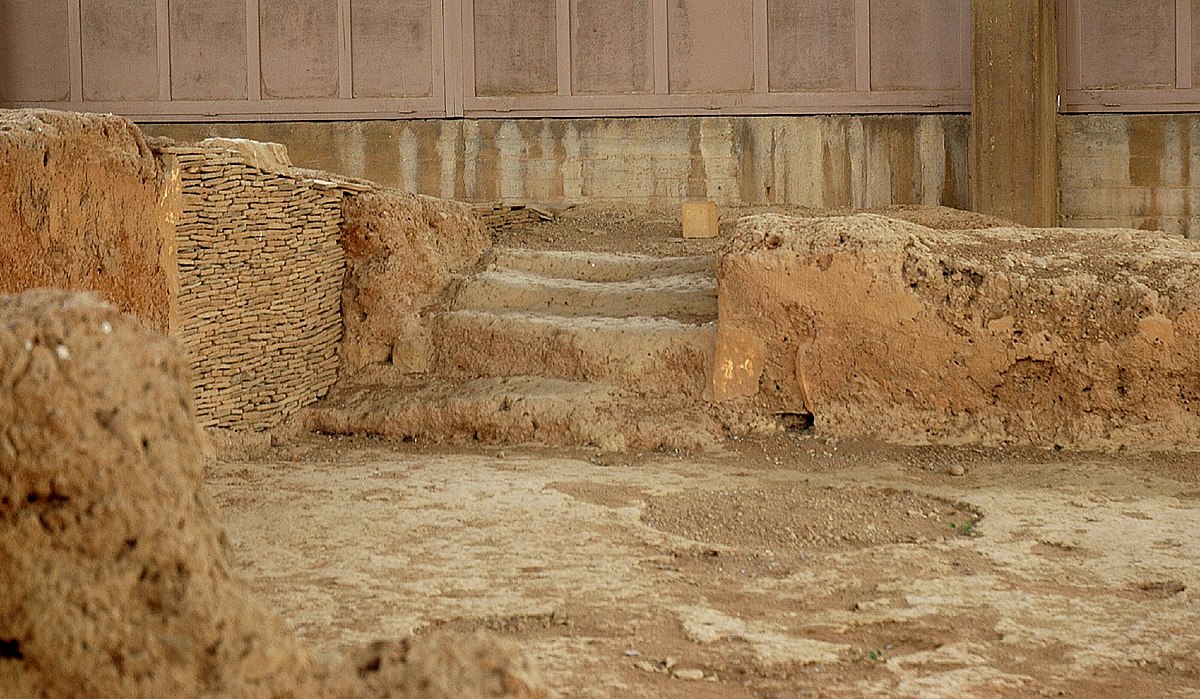
Minoans & Their Destruction
The Minoans were taken over by other mainland Greeks around 1490 BCE. The mainlanders were Mycenaeans, the group that also likely sacked Lerna.
Around 1375 BCE, Knossos was burned and looted. We suspect the Mycenaeans to be the culprits. Although it kept being a major center and expanded into the early Iron Age from 1100 BCE, Crete was reduced in importance when compared to mainland Greece.
Mycenaeans & Their Rise/Collapse
Were a strong fighting civilization on mainland Greece. Likely overthrew the Minoan civilization on Crete. Their collapse was possibly due to fires, earthquakes, or perhaps a Dorian invasion? Major drought?
Knossos & Crete
Knossos: The palace was built gradually between 1700 and 1400 BCE. Suffered damage and was continually rebuilt on several occasions.
It was destroyed around 1200 BCE. What we see now was restored in the 1920s by Sir Arthur Evans, a British archeologist. Knossos had plumbing, mostly for the wealthy.
Crete: Island where the Minoans lived. Housed the palace of Knossos. Had no human sacrifice.
Thera/Akrotiri/Santorini and its destruction
There was a significant settlement at Akrotiri on the island of Thera, Santorini.
There's economy features art and pottery, suggesting they had a distinct culture that's different than the Minoans.
Huge volcanic eruption destroyed the settlement.
Linear A
the script of the Minoan language, written on clay tablets. We haven't deciphered it yet, but a theory says it could be a specific language that few people can decipher.
Linear B
the script of the Myceneans, is actually the Greek language, so we can read it. Written on stone tablets.
Is readable due to the work of Micheal Ventris, linguist John Chadwick, and Alice Kober in 1952.
Minoan hieroglyphics: unrelated to Egyptian hieroglyphics
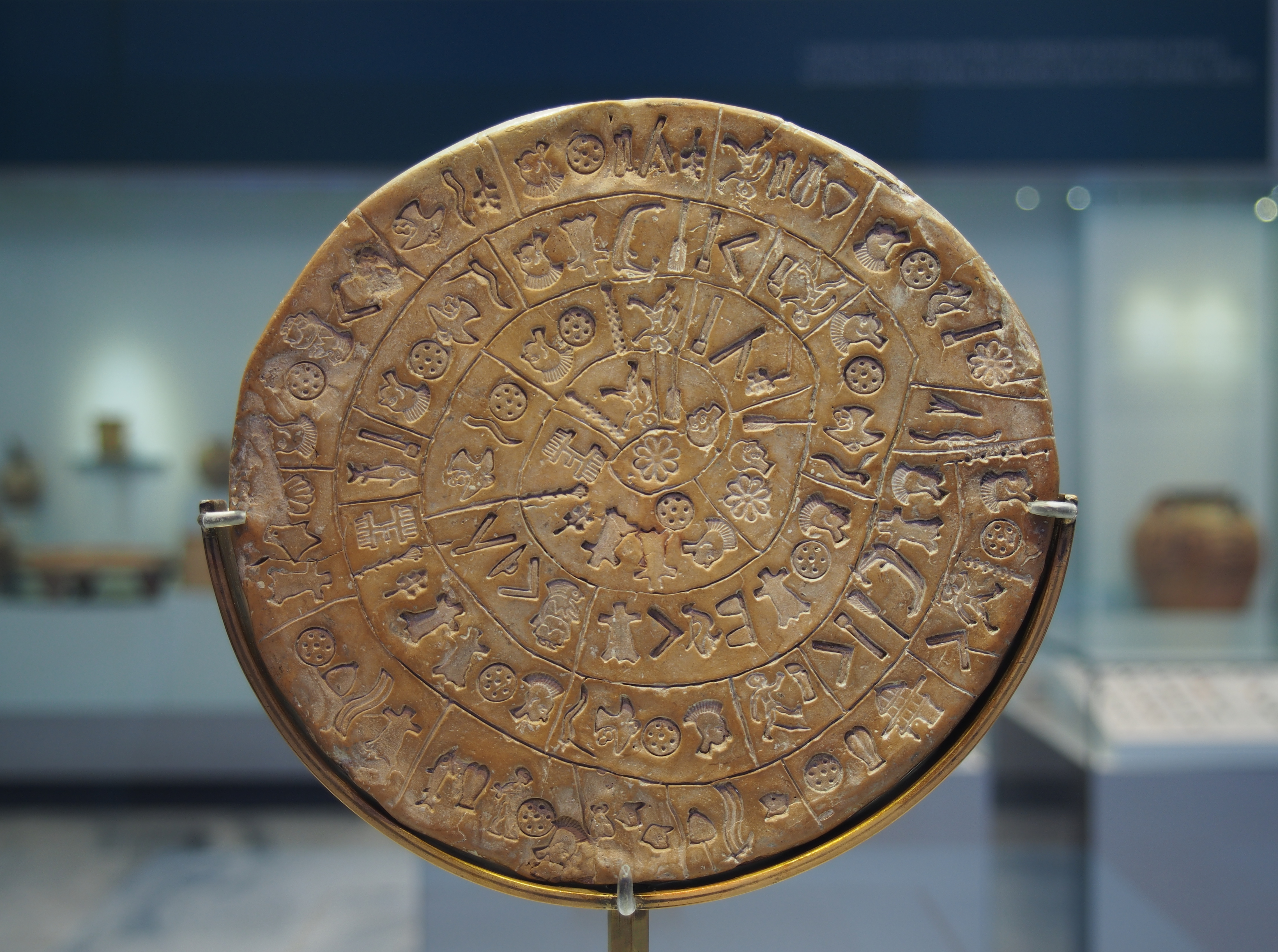
Phaistos disc (overall, and language/symbols)
From the island of Crete, possibly from the middle or late Minoan Bronze Age. Unknown purpose (maybe religious?), written in an unknown language that is yet to be deciphered.
Mycenean Gods
The children of Cronus and Rhea are Zeus, Hestia, Hades, Hera, Poseidon, and Demeter.
The children of Kronos and Rhea form the main part of the major Olympian Gods (the "big twelve")
The gods lived on Mount Olympus, except for Hades, who lived in the underworld. Most Greek gods had Roman equivalents.
Clay tablets and readings portray the Gods. Religion was an essential part of everyday life.
Economy on Mainland Greece
Trade networks and agriculture.
Built large houses for leaders.
Tomb types of Mycenae
Shaft tombs - the earliest type of tomb which are rectangular graves cut into the bedrock (found at Grave Site A)
Chamber tombs - are designed to look like houses, with an entrance passage (dromos), an entrance (stomion), and a chamber.
Tholos tombs - similar to chamber tombs, but they were larger and their walls were built using corbelling. This technique gave tholos tombs a beehive shape.
Mycenae Sites
Mycenae, Tiryns, Pylos, Orchomenos, Sparta
Theories on Destruction of Mycenae & Other Sites
Their collapse was possibly due to fires, earthquakes, or perhaps a Dorian invasion? Major drought? End of Mycenaean (and Mycenae) also brought the end of the Bronze Age.